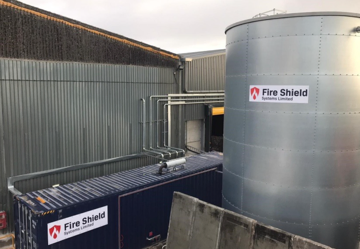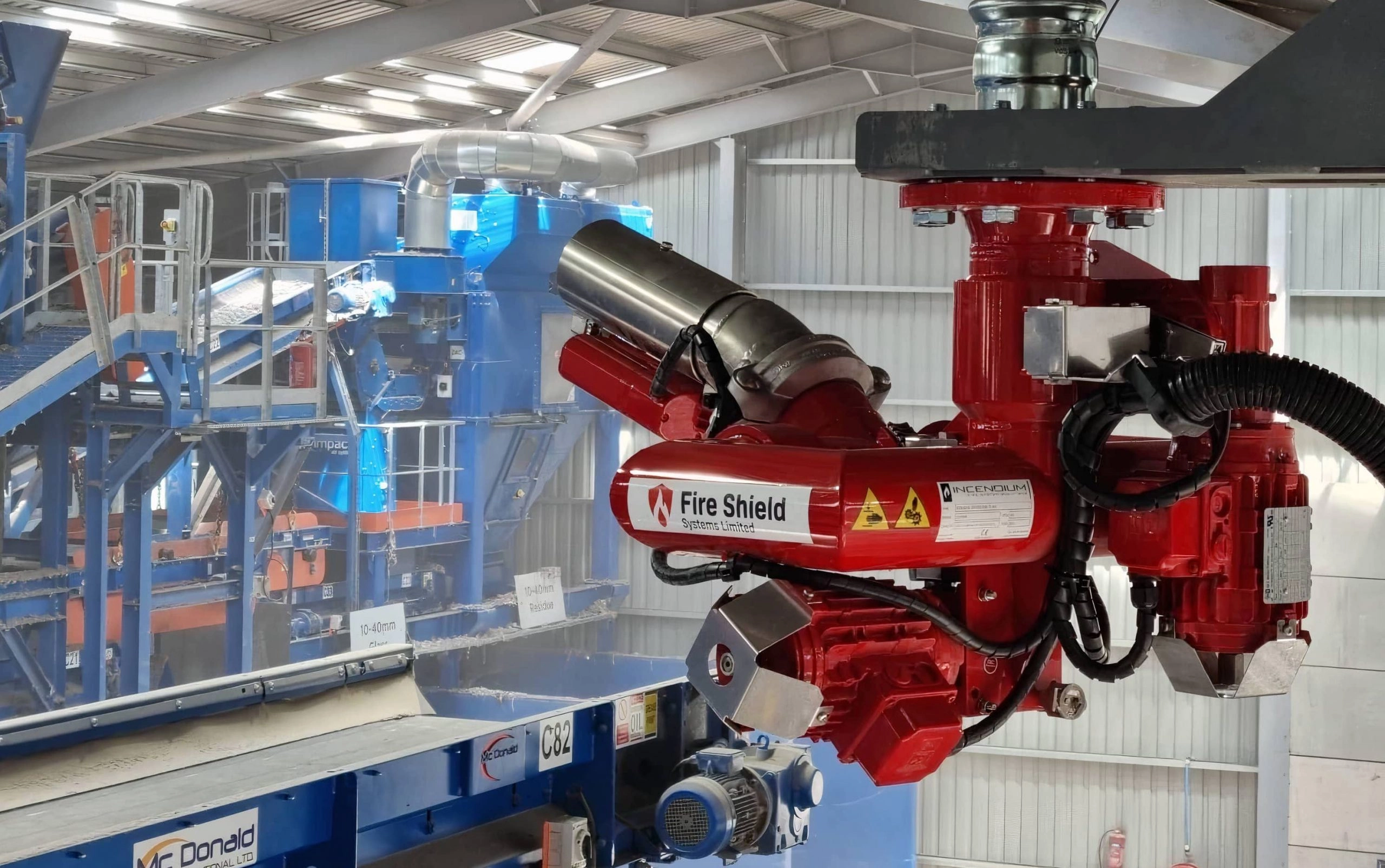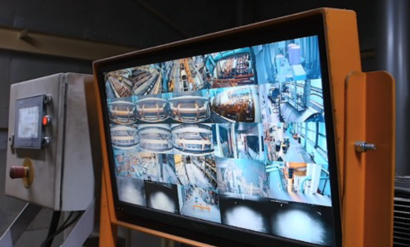Waste and recycling sites are seeing more fire risks – amplified by the increasing prevalence of batteries in waste streams and as power sources for operating vehicles and machinery.
We discuss how taking a proactive approach to fire safety can benefit waste and recycling businesses, resulting in minimised costs and downtime.
Evolving risks
Waste streams can carry a variety of materials, each causing different safety risks. The specific contents of waste streams may shift over time, depending on society’s use and disposal of various materials.
Recently, batteries, particularly lithium ion (li-ion) batteries, have become increasingly common for waste and recycling businesses. These can be found in a variety of waste, including mobile phones or children’s toys, and are also frequently used as a sustainable power source for the site’s vehicles and machinery.
The main safety risk of any battery is thermal runaway, which occurs when the battery cells malfunction after physical damage, mechanical failure or overcharging. During this state, a battery rapidly produces excess heat, leading to combustion, toxic gas emissions and potential explosions. Waste is often processed using heavy-duty machinery, meaning physical damage to batteries in waste streams is more likely, increasing the risk of thermal runaway.

Operational downtime and equipment damage
After a fire has occurred, operational downtime can be crippling to a waste and recycling business. Although a minor fire causes little damage to equipment, your site could still be closed for ongoing risk assessments or investigations.
All too often, waste businesses take a reactive approach to fire safety – waiting for a fire to occur before implementing safety procedures to prevent it. This approach often leads to operational disruption, reputational damage and increased damage costs.

Case study one: reactive approach
In 2021, an Ireland-based recycling site experienced a large fire at its materials recovery facility (MRF), caused by an battery in the facility’s waste stream. The site had no fire protection in place, therefore, the fire spread quickly, causing whole-site loss.
A several million euro investment was needed to rebuild the entire facility, excluding operational downtime and reputational costs and any fine/sanctions.
The fire protection system installed after the fire represented a small amount of the total investment. Had this been installed proactively, extensive damages and costs could have been avoided.
Case study two: proactive approach
In 2019, a cement company was looking to produce SRF using the shredding line of a nearby waste and recycling facility, which would then be stored and used as a fuel source for the cement plant.
To stay ahead of the fire risks associated with SRF, the company conducted a full risk assessment. This influenced two bespoke automatic fire protection systems: an automatic foam cannon, flame detection system and local application deluge water spray system for the SRF production system, and a type-tested water spray system, activated by heat and flame detection for the SRF storage facility.
By doing this, both sites minimised operational downtime risk, saved costs and ensured the ongoing safety of their teams.
How can you take a proactive approach?
1. Site planning and mapping
Your site’s fire prevention plan (FPP) should be informed by a full risk assessment. This will highlight any high-risk areas, such as those storing flammable or hazardous materials. Your FPP should then look for ways to minimise these risks, for example, by storing ignition sources at least six metres away from combustible waste.

2. Battery storage and processing
Your waste facility will inevitably encounter batteries in waste streams. When storing these, they should be kept in weatherproof containers and away from any liquids. Any damaged batteries should be isolated, and li-ion batteries should be disconnected from vehicles or machinery.
Your site should also have checks in place to identify batteries before the waste is processed. Inevitably, some will be missed, which is why you’ll also need a suitable battery fire detection system that can detect hotspots quickly and implement the appropriate suppression technique to reduce risk of thermal runaway.
3. Waste management and temperature checks
Waste should be regularly monitored to prevent reactions between various materials. When accepting waste, you should firstly identify the temperature of materials – if any seem unusually hot, they should be quarantined to cool or isolate the risk.
Regular checking of waste piles temperatures will also minimise self-combustion. It’s also important to ensure that waste isn’t kept in direct sunlight for a long time, or near any reflective surfaces that can reflect this sunlight onto waste piles.
4. Fire detection and suppression
Your fire detection or suppression system should be informed by your site’s individual risk assessment. It should be proportional to your site’s size, and should address the risks associated with the materials you’re handling and your methods for processing them.
For more information, or to find out the type of suppression solution needed to best protect your operating environment, get in touch here, or call us on 0800 975 5767.

